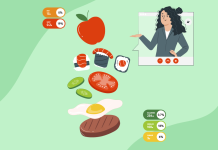You might be wondering about weaning when you’re breastfeeding or bottle-feeding your baby. Like all milestones in your baby’s life, this, too, is one that will come to an end. And when the time is near, you might have many questions.
When is the right time for weaning? How do I give my baby solids? What foods do I introduce my baby to? Is the transition difficult?
If the same questions are in your mind, you have come to the right place. This guide highlights everything new moms need to know about weaning from breastfeeding or bottle-feeding.
When to Start Weaning a Baby?
Weaning involves transitioning your baby from milk to solid food. Regardless of whether your baby has been bottle-fed or breastfed, you need to search for signs if your baby is ready. Generally speaking, most babies are ready for solid food when they turn four to six months old. At this age, babies require vitamins and nutrients that are not present in milk.
To know for sure if your baby is ready for solid foods, you should look for the following signs:
- Your baby can sit without support
- Your baby becomes more demanding for food, and the milk does not seem sufficient for them
- They seem interested in the food you are eating
- Your baby does not push food out
- They have good head control
How to Wean a Baby?
You can start the weaning process if your baby is ready for solid food. It should be noted that you must start weaning slowly. Therefore, when your baby turns four months old, give them food only once daily and under your supervision.
You should also invest in the right feeding bowl and spoon designed for babies. For example, have a wide range of such utensils. They also have weaning spoons that fit easily in small mouths and are BPA-free.
Moreover, ensure that the food you give is digestible, cool, soft, and mashed. You could also mix the food in the baby’s milk. When feeding your baby solids, you should give one type of food at a time to look for any allergic reactions. If you notice tolerance to the food, you should continue giving it to your baby.
In the beginning, you should gradually reduce the length and frequency of feeds and slowly reduce the number of breastfeeds or bottle feeds per day and replace them with solid foods and drinks from a cup. You can start by dropping the least important feedings first, such as midday feeds or bedtime feeds.
While feeding your baby solids, be sure to let them explore what they are eating. Therefore, consider adopting a baby-led weaning style where they feed themselves. Use finger food or solids that your baby can easily pick up.
You can choose to spoon-feed your child or carry out baby-led weaning. Most parents actually adopt an approach that is a blend of both.
What to Feed Your Baby
You need to provide nutritious food to your baby that allows them to grow and enhances their health. When weaning a baby, you should incorporate food with a variety of flavors and textures to help them develop a taste for different foods. Start with soft and mild-tasting fruits and vegetables, such as bananas, apples, pears, sweet potatoes, carrots, and peas, and gradually introduce new flavors and textures.When feeding vegetables, be sure to give them ones that are not too sweet, such as cabbage, cauliflower, and broccoli. Avoid giving your baby processed snacks, such as cereal bars or fruit snacks, that are high in added sugars. Instead, offer whole foods, such as fresh fruits or vegetables, that are naturally sweet and packed with nutrients.
Moreover, avoid adding too much salt or sugar to their food since neither is good for their health. The best way to give them any kind of food is by mashing and pureeing them. You can even mix the food with their milk.
Remember to always supervise your baby during meal times and offer foods that are appropriate for their age and development. It’s also important to introduce new foods one at a time and watch for any signs of allergies or intolerance.
Here are some of the foods you can give your baby when they are ready to be weaned:
- Vegetables – soft, boiled, or cooked vegetables like broccoli, sweet potato, butternut squash, peas, carrot, pumpkin, courgette, green beans
- Fruits – pureed or mashed blueberries, bananas, avocado, mango, apple, peaches, plums, pear, kiwi, nectarine, oranges, melon
- Starchy foods – cooked, blended, or mashed oats, baby rice, pasta, bread, potato, pita bread, chapati
- Dairy – full-fat, sweetened, or unsweetened yogurt or cheese
- Protein – cooked, boiled, and mashed chicken, turkey, beef, lamb, egg, beans, lentils, fish
As mentioned, you should also introduce your baby to possible allergen food to build their tolerance. These can include the following:
- Cow’s milk
- Eggs
- Fish or shellfish
- Foods with gluten
- Peanuts and nuts
- Soya



















































